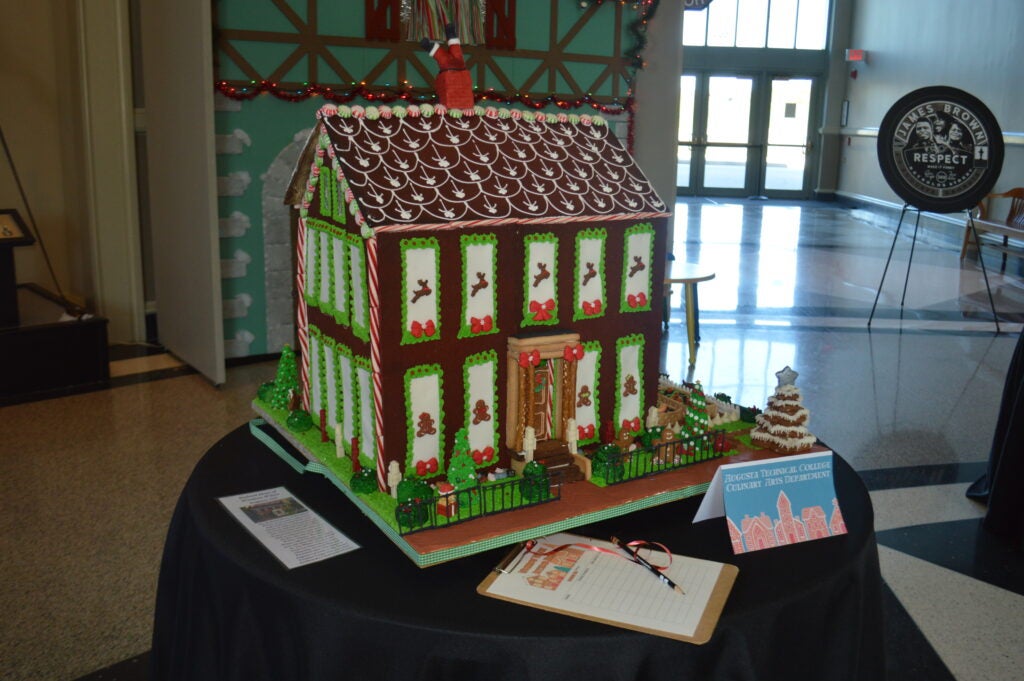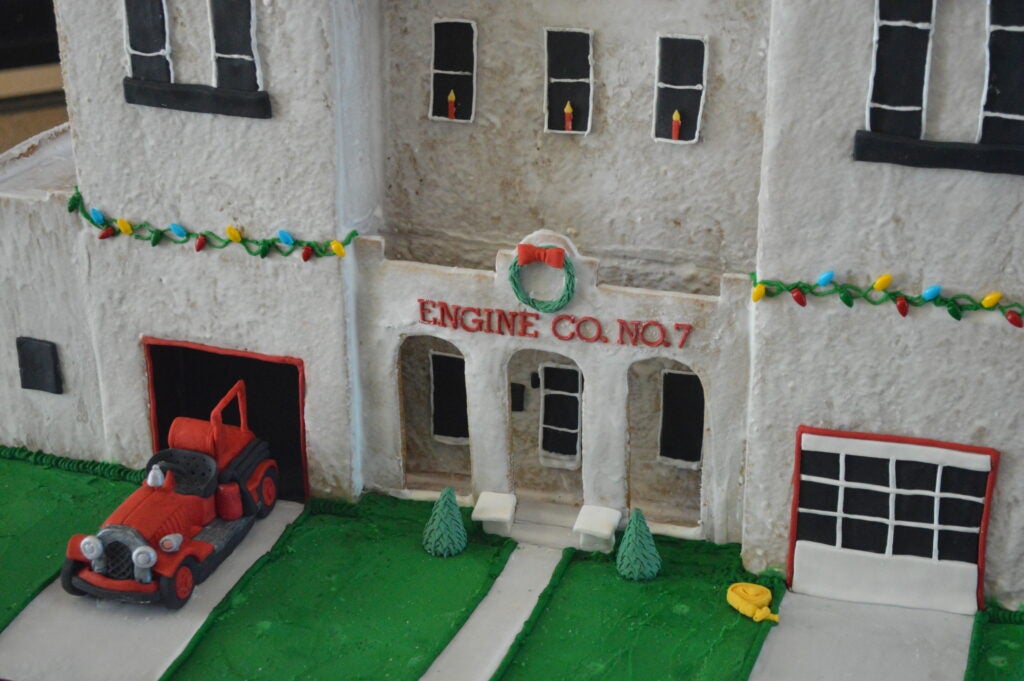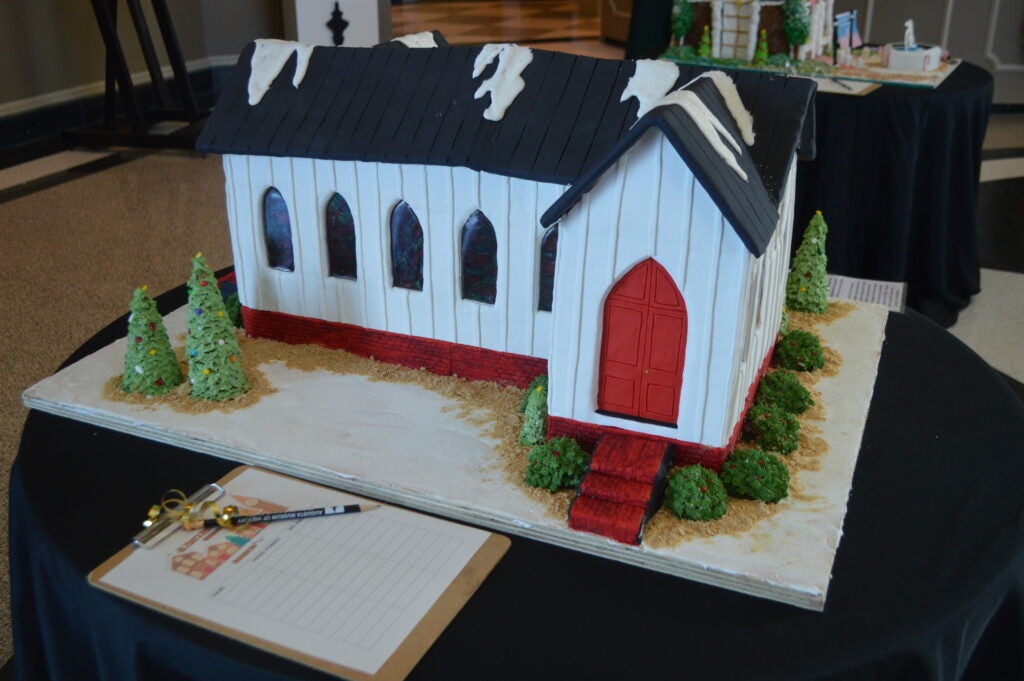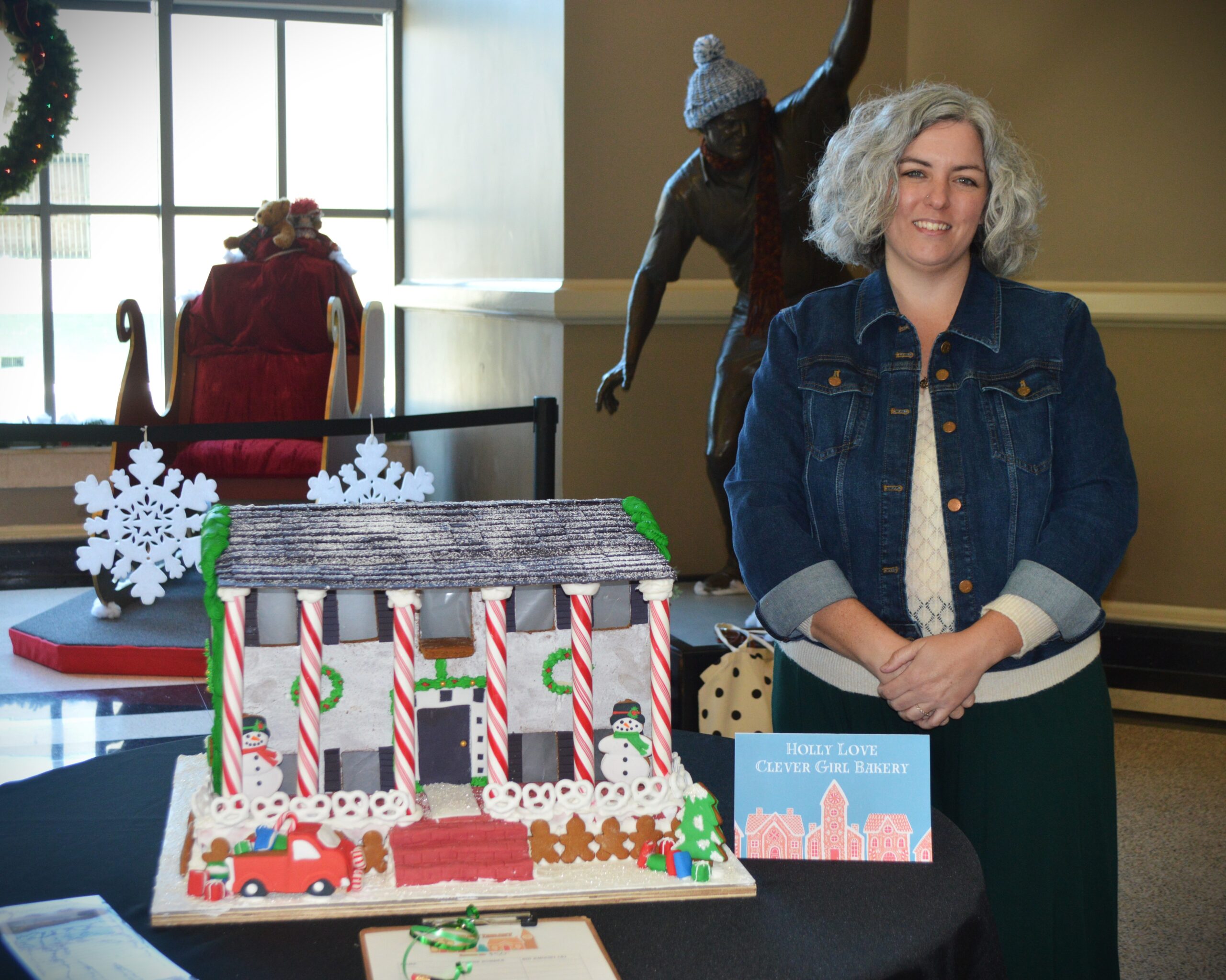The Boyhood Home of President Woodrow Wilson, The Appleby Library and the Gould-Weed House are just a few of the local landmarks that have been handcrafted out of gingerbread by local artisans throughout the CSRA.
These structures made from the traditional holiday confection are being showcased as part of the Augusta Museum of History’s (AMH) 18th annual Holiday Gingerbread Village.
Sweet competition
Community members will have a chance to vote for their favorite out of nine gingerbread landmarks until the last day of the event on Dec. 1.
“It’s been constant,” said Nancy Glaser, AMH Executive Director, about the stream of visitors that have come in to see the village so far this year. “People coming in wanting to see it, wanting to vote, wanting to see what the creations look like.”

Construction process
With features like candy cane columns and edible stained glass windows, the construction process for these gingerbread masterpieces can be time consuming.
“Some people take months, because they have to make the gingerbread itself,” said Glaser.
Holly Love, the museum’s education assistant, said it took her “three really intense days” to finish her entry – a recreation of The Appleby Library. The library was originally built in 1830 as a summer residence for Judge Benjamin Holmes Warren.
“I’ve always loved the Appleby Library,” said Love. “It was one of the first places I went when my family, and I moved here about nine years ago. And I just thought it was so cool that it’s in an old house. I love old homes and architecture.”
Visitor reactions
Cassandra Grondin is a historian who recently moved to Augusta from California, and she paid a visit to the Gingerbread Village on Friday.
“I just love history, and I’ve been excited to come here…it’s really cool to see these [structures], especially the detail,” she said.
Grondin said the experience made her feel inspired to visit the real landmarks.
“I’m excited to see them now,” she said. “I really like seeing the creativity.”
Mona Libby has been to the museum many times, but has never come to the Gingerbread Village. She said she enjoyed seeing Stephanie Landrum’s version of Firehouse Number Seven, a familiar landmark to her.
“I used to work down the road from the old fire station so it’s just cool to see it,” she said.

Take a delicious piece of history home
All pieces on display are purchasable by the community, priced at around $50 each.
According to Glaser, all gingerbread houses that aren’t sold will be gifted to the local children’s hospital, Ronald McDonald House of Augusta or someplace similar.
“If they’re not sold, we find good homes for them,” she said.











